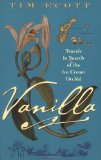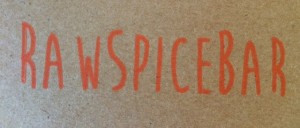Vanilla
The Basics
Whoever associated plain and boring with vanilla got their wires crossed. Vanilla is one of the most complex spices in existence making it the second most expensive spice after saffron. Oh yeah, it also carries the title of the most popular spice in the world. Not bad for boring.
Let’s start with the seed. A vanilla seed won’t germinate without the presence of certain mycorrhizal fungi. To get around this obstacle, plantations are developed using cuttings from other mature vines. Biologically speaking, it limits the genetic diversity of the plant because you’re essentially cutting and growing from the same individual. Now you have the plant but you need fertilized flowers for the fruit (vanilla bean) to develop. Turns out the flowers could only be pollinated by a specific bee that lives only in Mexico. To get around this obstacle farmers hand-pollinate the flowers. Once the flowers are pollinated the beans can grow.
When the beans are mature they are harvested. But to create vanilla as a spice the farmers begin a 6-month long, work-intensive, curing process. The curing is key to getting the vanilla flavor. Without it you simply have little black, flavorless vanilla seed specks. These specks look pretty in ice-cream but do nothing for flavor. Different countries and plantations have their own curing process but basically the beans are left outside during the day then wrapped in blankets and brought in to “sweat” during the night. This goes on for 5-6 months. To prevent rot the beans need to then be dried for 3-4 weeks. After this stage they beans are conditioned by stored in a box for several months to allow the flavor to develop.
Like wine, vanilla is affected by terroir. Environmental conditions, harvest timing, and curing conditions all influence the final flavor.
The Form
Vanilla beans are long thin beans ranging in size up to 15 cm. They turn a pale yellow at the end of the bean when they are ready to be harvested. Beans ripen individually and must be assessed and harvested on a daily basis. The timing of the harvest is critical to the overall quality of the vanilla essence inside.
- Ground vanilla is made from scraped vanilla pods from processed vanilla.
- Vanilla extract is made by steeping the split vanilla beans in an alcoholic base like vodka or a sugar base.
- Vanilla powder is made from grinding the cured pods and mixing with sugar and starch.
There are four main types of vanilla. These are:
- Mexican Vanilla made from the original V. planifolia plant in Mexico. It’s often marketed as vanilla from the land of its origin.
- Bourbon-Madagascar Vanilla also made from V. planifolia imported from Mexico to islands in the Indian Ocean, originally to Ile Bourbon (named after the French House of Bourbon). The island is known today as Reunion.
- Tahitian Vanilla from, where else…the Tahitian islands. It’s made with V. tahiensis, a hybrid of the Mexican bean. Tahitian vanilla is not as potent.
- West Indian Vanilla made from V. pomponaand grown in the Caribbean as well as Central and South American.
The Flavor
Describing vanilla is like attempting to describe a color. Vanilla is strongly aromatic and contributes warm, floral notes. It’s a gentle but distinct flavor that complements many other spices and foods.
The Story
The first people to cultivate vanilla were the Totonic people of Mexico. Their legend says that a goddess princess fled with her forbidden mortal lover to the forest. They were hunted down and killed. When their blood touched the earth, vanilla sprang up from the ground. The Aztecs also developed a taste for vanilla. Like chocolate, vanilla ended up on the taste buds of Cortes, the Spanish explorer, who brought it to Europe.
Want to read vanilla’s spicy story? Click on the book cover to learn more.
Health Benefits
Vanilla’s health benefits are mostly due to what it’s not when you spend your money for the real thing. Because vanilla is so expensive to grow and process there are many imitations.
Vanillin, a common substitute, is made really is a compound from the vanilla bean—only one of about 133 different compounds found in vanilla which gives real vanilla its aromatic and complex flavor.
Artificial vanilla or “imitation vanilla extract” is made from lignin, a by-product of the pulp and paper industry. Nice, huh?
If you’re in Mexico looking to purchase vanilla from its land of origin–buyer beware. In an effort to reduce cost Mexican vanilla is mixed with a tonka bean extract. It looks and smells like vanilla but this extract contains something called coumarin. Coumarin has been known to cause liver damage in lab rats and is a banned substance by the U.S. Food and Drug Administration.
Try It!
Making your own vanilla extract is simple and provides a creative, memorable great gift for any occasion. Learn how here.






8 Pingbacks